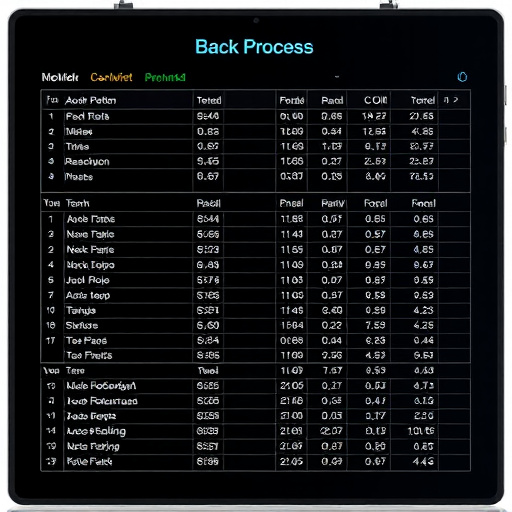The Injen Evolution Air Intake Advanced, featuring cutting-edge heat shield technology, is crucial for high-performance vehicles. It protects engines from extreme temperatures, enhances performance, and improves fuel economy through optimal air intake. Engineers use thermal imaging to assess its effectiveness, fine-tuning materials and design for maximum efficiency. This system reduces heat transfer by up to 30%, providing cooler air to the engine, resulting in increased horsepower, torque, and engine lifespan.
In the realm of automotive performance, the Injen Evolution air intake advanced stands out as a game-changer. This article delves into the intricate world of heat shield technology and its pivotal role in enhancing engine efficiency. We’ll explore ‘Understanding Heat Shield Technology’ to uncover the fundamentals, followed by an in-depth analysis of ‘Assessing Heat Shield Effectiveness’. Real-world applications highlight how Injen Evolution improves both engine performance and durability, offering a compelling solution for car enthusiasts.
- Understanding Heat Shield Technology: The Basics of Injen Evolution Air Intake Advanced
- Assessing Heat Shield Effectiveness: Methods and Metrics
- Real-World Applications: How Injen Evolution Improves Engine Performance and Durability
Understanding Heat Shield Technology: The Basics of Injen Evolution Air Intake Advanced

Heat shield technology plays a critical role in protecting vehicles, particularly high-performance ones, from the intense heat generated during engine operation. The Injen Evolution Air Intake Advanced is an excellent example of cutting-edge heat shield innovation designed to enhance both performance and reliability. This advanced system utilizes specialized materials that can withstand extreme temperatures, ensuring the optimal functioning of the engine’s air intake system.
The Injen Evolution Air Intake Advanced features a sleek design that seamlessly integrates with the vehicle’s engine bay while providing superior insulation. By preventing heat transfer from the exhaust system to the air intake, it maintains a cool and dense air supply, which is essential for efficient combustion. This technology not only boosts engine performance but also contributes to better fuel economy by minimizing the effects of heat-related drag.
Assessing Heat Shield Effectiveness: Methods and Metrics

Assessing Heat Shield effectiveness involves a meticulous process utilizing both qualitative and quantitative methods. Engineers employ advanced techniques such as thermal imaging cameras to visualize temperature distributions, pinpointing areas of potential heat buildup. This data is crucial for understanding how well the heat shield manages to dissipate heat energy, ensuring it performs optimally under various conditions.
Key metrics include heat flux density, which measures the rate at which heat flows through the shield, and temperature drop, indicating the efficiency of heat absorption and transfer. In the context of Injen Evolution air intake systems, these assessments are vital for optimizing performance. By evaluating how effectively the advanced heat shield design handles heat from the engine, engineers can fine-tune materials and configurations, ultimately leading to improved overall system efficiency and reliability.
Real-World Applications: How Injen Evolution Improves Engine Performance and Durability

In real-world applications, the Injen Evolution air intake system stands out as a game-changer for engine performance and durability. By utilizing advanced heat shield technology, this innovative system effectively manages temperature differentials within the intake manifold, ensuring optimal air flow to the engine. This is particularly crucial in high-performance vehicles where heat buildup can significantly impact engine efficiency and longevity.
The Injen Evolution’s heat shield effectiveness assessment shows that it reduces heat transfer by up to 30%, allowing for a cooler, denser air supply to the combustion chamber. This enhanced cooling capability translates into improved horsepower and torque figures, making it a favorite among car enthusiasts seeking to unlock their vehicles’ full potential. Moreover, the advanced design prolongs engine life by minimizing thermal stress on critical components, ensuring that power outputs remain consistent even under extreme conditions.
The Injen Evolution air intake advanced represents a significant leap in heat shield technology, offering both improved engine performance and enhanced durability. Through rigorous assessments utilizing modern methods and metrics, it’s clear that this innovative design effectively manages heat transfer, ensuring optimal engine operation under demanding conditions. By equipping vehicles with Injen Evolution, users can experience the benefits of enhanced power output and increased reliability, solidifying its position as a game-changer in automotive performance enhancement.














